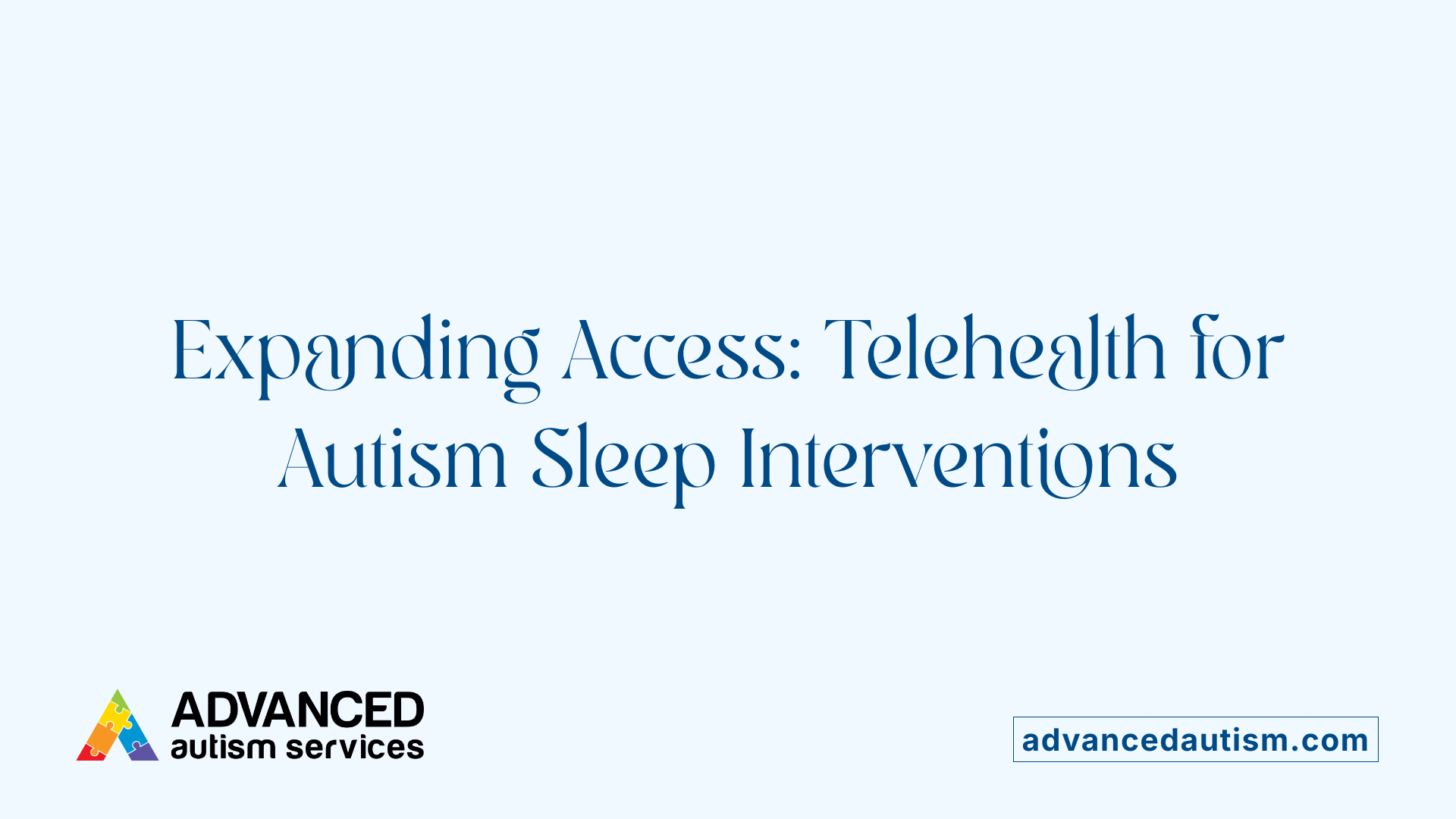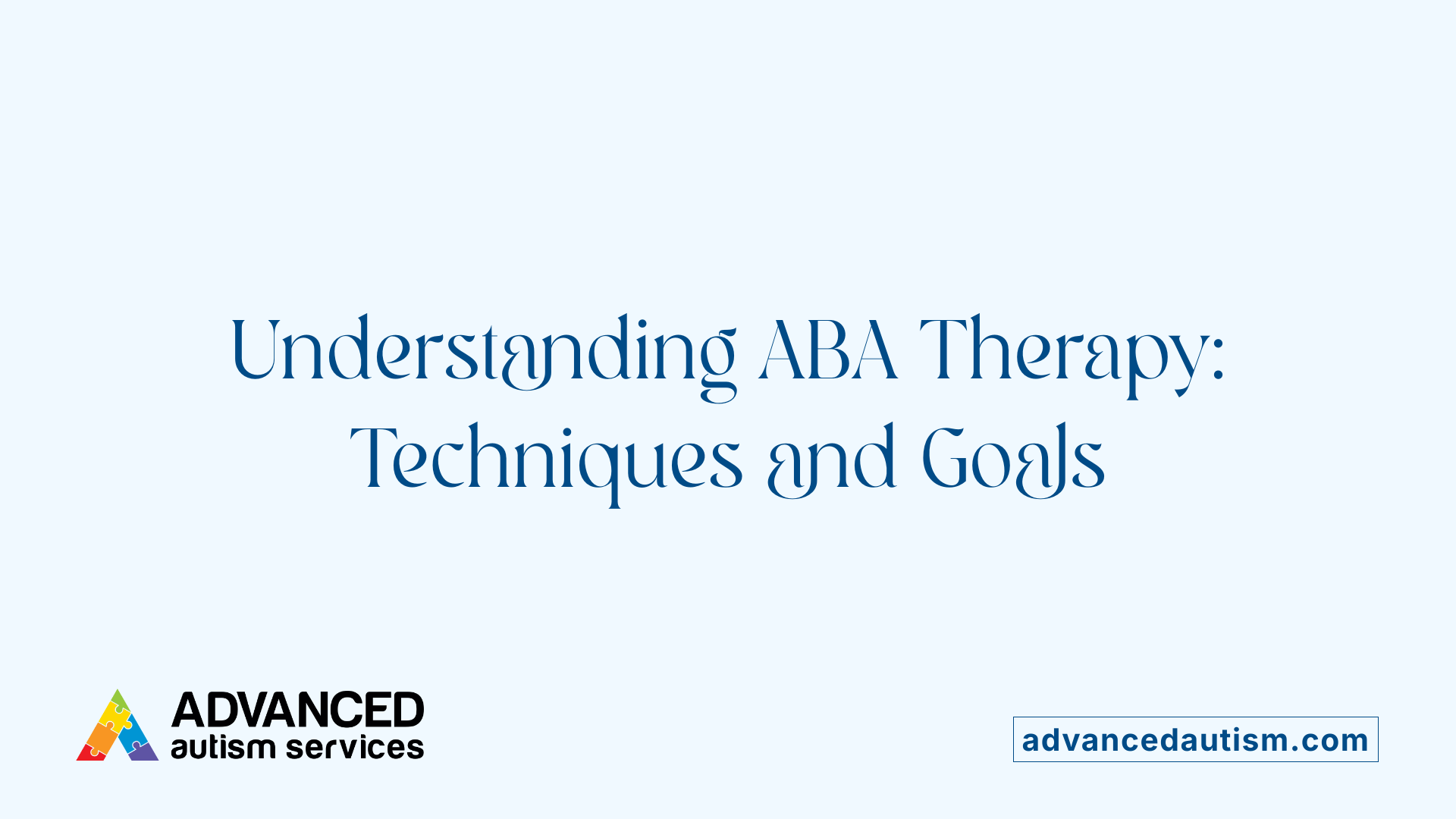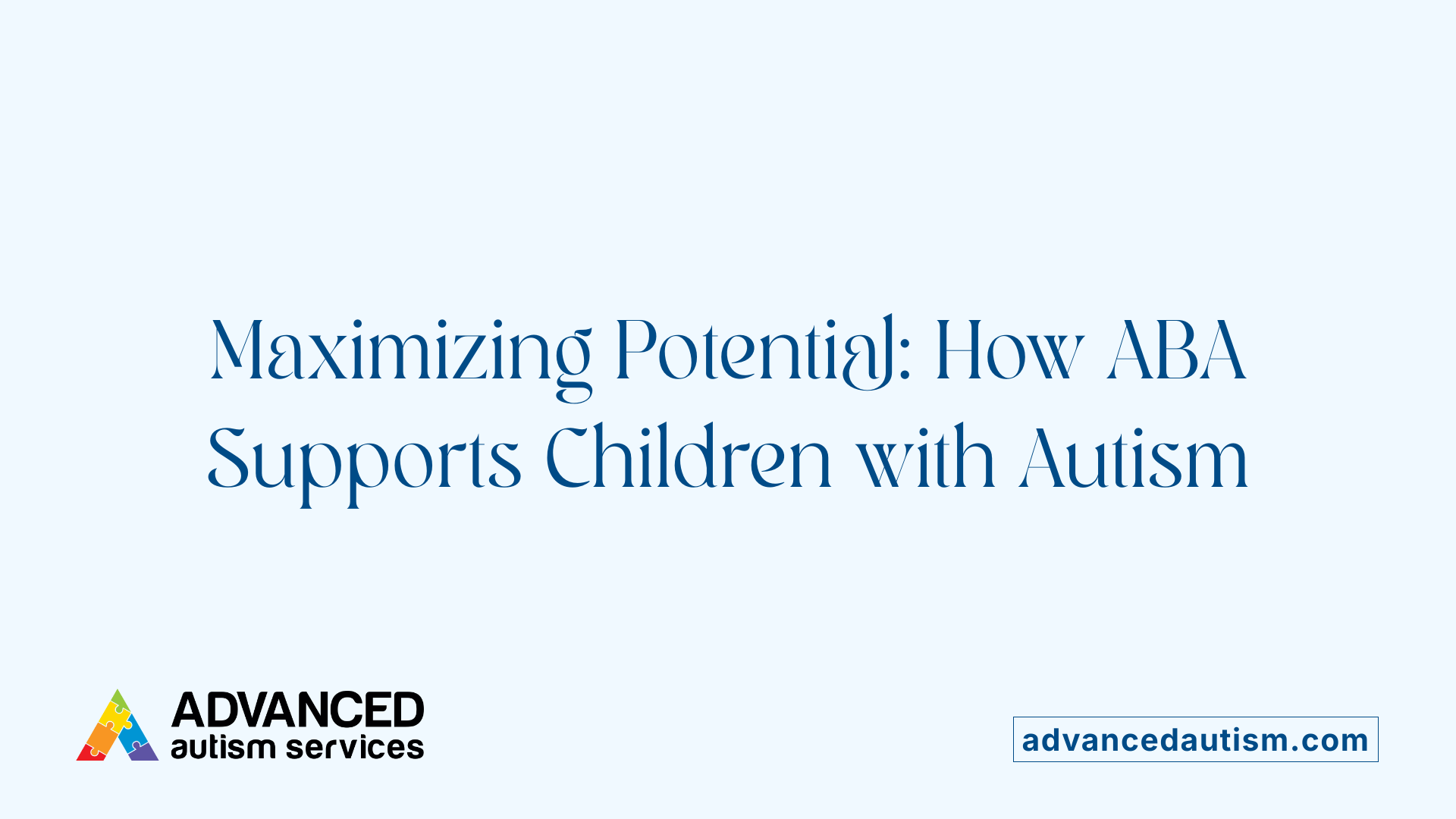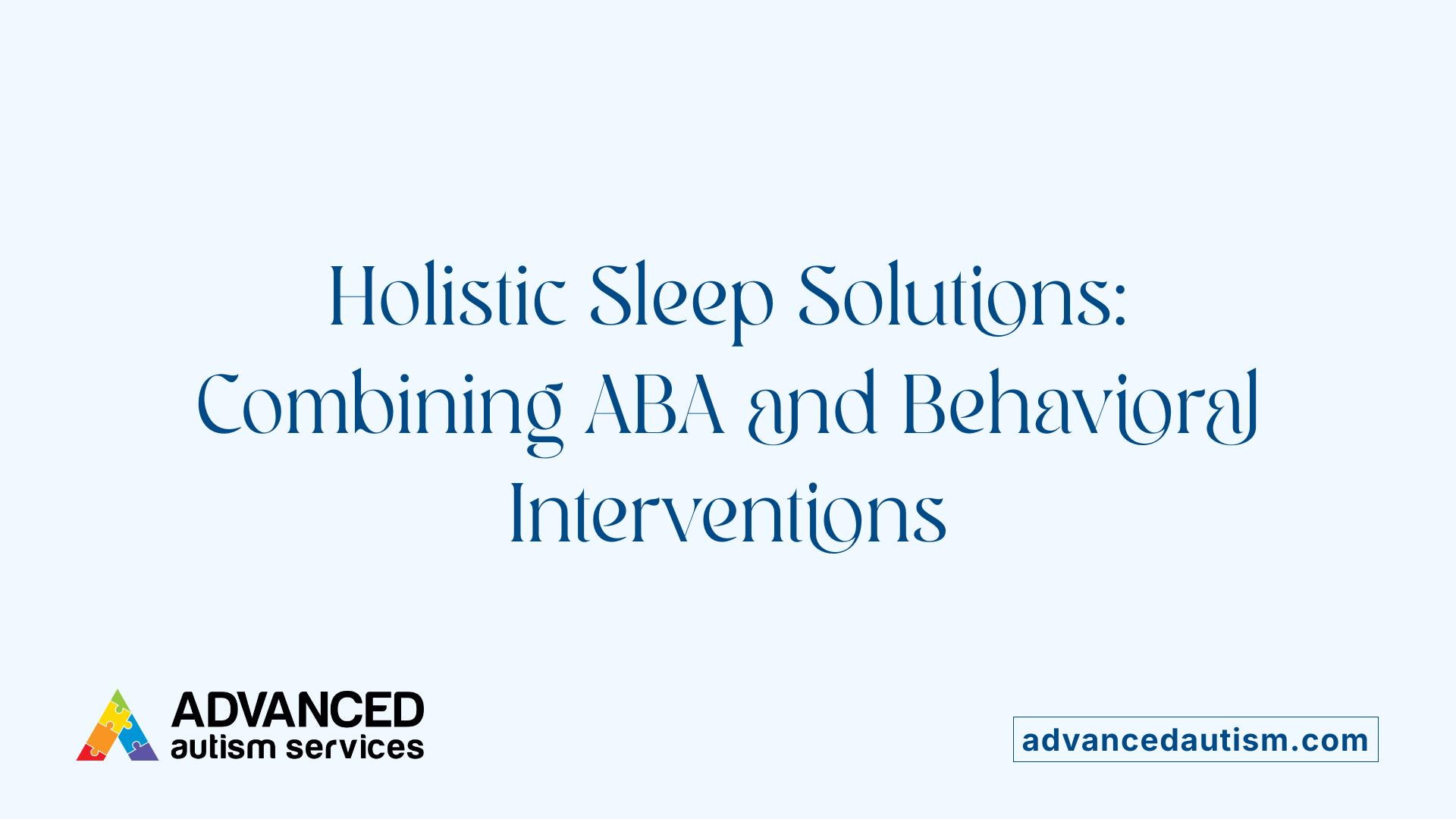Supporting Sleep Issues in Children with Advanced Autism
Innovative Approaches to Managing Sleep Challenges in Children with Autism
Understanding Sleep Challenges in Children with Advanced Autism
Children with advanced autism often face significant sleep difficulties, which can impact their daytime functioning and overall quality of life. Insomnia is especially common in this population, complicating both the child's development and family well-being. Addressing sleep issues through tailored, evidence-based interventions is critical, and recent advances highlight promising approaches such as cognitive behavioral therapy delivered via telehealth. This article explores effective strategies for supporting sleep in children with autism, including behavioral interventions rooted in applied behavior analysis (ABA), and discusses the challenges and considerations for families seeking therapeutic support.
The Prevalence and Impact of Sleep Problems in Autism
Incidence of insomnia in children with autism
Insomnia is a common issue affecting many children with autism spectrum disorder (ASD). Various neurological, physiological, and behavioral factors contribute to their difficulties in falling asleep and staying asleep throughout the night. These challenges often lead to chronic sleep deficits.
Effects of poor sleep on child behavior and family dynamics
Poor sleep has a notable impact on the daily functioning of children with autism. It can elevate physiological arousal and worsen behavioral symptoms, making social interactions and learning more difficult. Sleep problems also affect parents and families, resulting in increased stress and reduced overall family well-being.
Why do children with autism have sleep issues?
Children with autism experience insomnia due to differences in brain function and sensory processing that disrupt natural sleep patterns. Behavioural issues linked to ASD, such as difficulty with routines or heightened sensitivity to environmental stimuli, further complicate sleep onset and maintenance.
Addressing sleep difficulties in children with ASD is crucial for improving both child and family quality of life. Effective interventions tailored to this population are necessary to reduce the widespread negative effects of insomnia.
Cognitive Behavioral Therapy for Insomnia in Children with Autism
What are effective non-pharmacological treatments for sleep issues in autistic children?
Cognitive Behavioral Therapy for Childhood Insomnia (CBT-CI) stands out as a proven, non-drug approach to improving sleep in children with autism spectrum disorder (ASD). Unlike medication, CBT-CI focuses on behavioral change and teaching families skills to promote better sleep patterns.
Definition and principles of CBT-CI
CBT-CI is a structured therapy that combines cognitive and behavioral strategies to address insomnia. It helps children establish consistent bedtime routines, regulate sleep environments, and manage anxieties or fears related to sleep. The therapy involves parents actively, empowering them to support their child's sleep health effectively.
Adaptation of CBT-CI for children with autism
Recognizing autism-specific challenges, CBT-CI has been adapted to be autism-friendly and developmentally appropriate. A pilot study delivering CBT-CI via telehealth showed high treatment integrity with excellent delivery, receipt, and enactment rates. Parents found the approach suitable for their children's ages and ASD needs, making treatment more accessible and less burdensome than in-person sessions.
Effectiveness of CBT-CI for improving sleep and behavior
The telehealth-delivered CBT-CI improved sleep quality for both children and their parents, alongside better child behavior and physiological calming. Objective measures like actigraphy and heart rate variability confirmed reduced arousal and improved sleep patterns. These promising results suggest CBT-CI not only addresses insomnia but also positively influences daytime functioning and family well-being.
This evidence supports CBT-CI as a valuable non-pharmacological option for sleep disturbances in autistic children, with telehealth increasing therapy accessibility and convenience.
Telehealth as an Accessible Mode for Delivering CBT-CI

Challenges of accessibility to traditional office-based therapy
Traditional cognitive behavioral treatment for childhood insomnia (CBT-CI), while effective, often requires multiple in-person office visits. This setup can restrict access for many families, due to travel, scheduling conflicts, and limited availability of specialized providers.
Pilot study results of telehealth CBT-CI delivery
A recent pilot study tested an eight-session CBT-CI program delivered via telehealth to 17 children aged 6–12 years with autism spectrum disorder and insomnia. The study found high treatment integrity with 98% session delivery, 93% parent receipt, and 82% enactment of strategies. Results included significant improvements in child and parent sleep quality, child behavior, and physiological arousal, as measured by objective tools like actigraphs and heart rate variability alongside subjective reports. Most children showed reduced arousal after treatment.
Parental feedback on telehealth feasibility and autism-friendly approach
Parents reported that the telehealth CBT-CI program was age-appropriate and well-suited for children with autism. The remote format allowed for greater flexibility and comfort, promoting engagement and adherence.
How can therapy for sleep issues be made more accessible for children with autism?
Telehealth delivery of CBT-CI represents a feasible and effective method that overcomes barriers of multiple in-person visits, making therapy more accessible to families and providing tailored support in an autism-sensitive manner.
Assessing Treatment Integrity and Outcomes in Telehealth CBT-CI
Measures of Treatment Delivery, Receipt, and Enactment
Telehealth delivery of cognitive behavioral treatment for childhood insomnia (CBT-CI) in children with autism showed impressive treatment integrity. Across eight sessions, therapy delivery fidelity was maintained at 98%. Parent receipt—the extent to which parents understood and absorbed the material—was 93%, while enactment or the application of learned strategies at home reached 82%. These measures indicate a high level of engagement and adherence to the protocol despite the remote format.
Objective Improvements in Child and Parent Sleep via Actigraphy and Heart Rate Variability
The intervention’s effectiveness was demonstrated through both subjective reports and objective physiological measures. Actigraphy, a reliable means of tracking sleep patterns via wearable devices, documented significant improvements in sleep duration and quality for children and their parents. Additionally, heart rate variability, an indicator of autonomic nervous system regulation, showed meaningful improvement indicating reduced physiological arousal associated with insomnia.
Observed Behavioral and Physiological Arousal Reductions
Notably, a majority of participating children displayed reduced physiological arousal post-treatment. This reduction was paralleled by observable behavioral improvements, with parents reporting better daytime functioning and reduced sleep-related issues. The combined evidence suggests that telehealth CBT-CI not only helps improve sleep but also alleviates stress-related behaviors in children with autism.
What Evidence Supports Telehealth CBT-CI Effectiveness for Children with Autism?
The pilot study involving 17 children aged 6–12 years confirmed that telehealth CBT-CI is feasible and potentially effective. High treatment fidelity combined with measurable improvements in objective sleep metrics and physiological stress markers underpin its promise. Positive parental feedback on the therapy’s autism-friendly and age-appropriate nature further strengthens the case for broader implementation and underscores the need for large-scale randomized controlled trials to validate these findings.
Overview of Applied Behavior Analysis (ABA) Therapy for Autism

What is applied behavior analysis (ABA) therapy for autism?
Applied Behavior Analysis (ABA) therapy is a scientifically grounded approach used to support individuals with autism spectrum disorder (ASD). ABA focuses on understanding and modifying behaviors by analyzing environmental causes and effects. It aims to increase helpful behaviors and reduce harmful or unhelpful ones by shaping behavioral patterns through systematic interventions.
Key techniques used in ABA such as positive reinforcement and A-B-Cs analysis
ABA employs specific behavioral techniques including:
- Positive Reinforcement: Encouraging desired behaviors by rewarding them to increase the likelihood they will occur again.
- A-B-Cs Analysis: Examining the Antecedent (what happens before a behavior), Behavior itself, and Consequence (what happens after) to understand and influence behavior patterns.
These strategies help identify triggers and motivators, enabling precise interventions to improve communication, social skills, and other developmental areas.
Individualized goal setting and treatment plans supervised by BCBAs
A Board Certified Behavior Analyst (BCBA) carefully assesses each child's unique strengths and needs to design a personalized ABA program. Goals often focus on:
- Enhancing language and communication
- Improving attention and memory
- Developing social skills
- Reducing problem behaviors
These plans are implemented across various settings such as home, school, and community, and are regularly overseen by BCBAs to ensure effectiveness and promote independence relevant to daily life and long-term success.
Benefits and Goals of ABA Therapy in Supporting Children with Autism

How does ABA therapy benefit individuals with autism?
ABA (Applied Behavior Analysis) therapy offers significant benefits to individuals with autism by helping them develop critical skills and reduce challenging behaviors. Through targeted, structured interventions, ABA focuses on improving communication, social skills, and daily living abilities, all of which contribute to better functioning and quality of life.
A key objective of ABA therapy is the reduction of problem behaviors. Using techniques such as positive reinforcement and analysis of antecedents and consequences (the A-B-Cs), therapists identify and modify behaviors to minimize those that interfere with learning or social interaction.
ABA is highly individualized, with a Board Certified Behavior Analyst (BCBA) designing a personalized program based on detailed assessments. This tailored approach ensures that therapy addresses each child’s unique strengths and challenges.
The therapy also promotes independence by teaching skills relevant to daily life and future success. This might include improving language and communication, enhancing attention and memory, and fostering social skills that enable better interaction with peers and adults.
Research supports ABA’s effectiveness as an evidence-based practice. Intensive, long-term ABA interventions (often 25–40 hours per week for 1–3 years) have demonstrated substantial improvements in IQ, language abilities, academic performance, and adaptive behaviors in children with autism.
Overall, ABA therapy not only reduces maladaptive behaviors but also equips children with essential skills, paving the way for greater autonomy and social integration.
Who Provides ABA Therapy and How to Choose a Quality Provider
Who provides ABA therapy services?
ABA therapy is delivered by a team of qualified professionals. The primary expert is a Board Certified Behavior Analyst (BCBA), who is responsible for designing and overseeing individualized ABA programs tailored to the child’s unique needs. BCBAs conduct detailed assessments, develop treatment plans, and supervise therapy implementation.
Registered Behavior Technicians (RBTs) or trained therapists carry out the day-to-day delivery of ABA therapy sessions under the BCBA's guidance. These providers work in various settings including the child’s home, school, and specialized clinics, ensuring that therapy is accessible and fits within the child’s daily routine.
What settings is ABA therapy delivered in?
ABA can be provided in multiple environments to support the child's learning and behavior across contexts:
- Home: Offers a familiar and comfortable setting where therapists work directly with children and families.
- School: Coordination with educators helps generalize skills to academic and social settings.
- Clinics: Controlled environments provide structured learning opportunities with specialized equipment and staff.
What should parents look for when choosing an ABA provider?
When selecting an ABA therapy provider, parents should consider several important criteria to ensure quality and effectiveness:
- Credentials: Verify that the team includes certified BCBAs and trained RBTs who follow ethical guidelines.
- Evidence-based Programs: Providers should use individualized, research-supported treatment plans with measurable goals.
- Transparency: Clear communication regarding costs, therapy methods, session schedules, and progress reporting is essential.
- Family Involvement: High-quality providers actively involve families in treatment planning and train caregivers to support skill generalization.
- Child-centered Approach: Respect for the child’s preferences, strengths, and developmental pace should guide therapy.
By focusing on these aspects, families can find ABA therapy services that not only promote improvements in communication, social skills, and behavior but also support long-term independence and quality of life for children with autism.
Challenges and Criticisms Surrounding ABA Therapy

Are there any criticisms or challenges associated with ABA therapy?
Applied Behavior Analysis (ABA) therapy is widely recognized for its effectiveness in supporting children with autism. However, it has also faced criticisms and challenges, some rooted in its history and others related to its practice today.
Historically, some ABA programs included aversive techniques intended to reduce harmful behaviors. These approaches are now considered unethical and have been discontinued. Modern ABA focuses on positive reinforcement techniques that encourage beneficial behaviors without inflicting discomfort.
Concerns have also been raised about the intensity of ABA programs—often involving 25 to 40 hours per week—and their potential impact on a child's emotional well-being. Critics worry that the therapy’s structure, emphasizing compliance and behavior modification, might suppress neurological differences instead of honoring them.
Consequently, there is a growing emphasis on delivering ABA in a respectful, individualized manner. This approach aims to tailor interventions to each child's unique needs, preferences, and strengths while promoting dignity and neurodiversity. Therapists and families are encouraged to engage in ongoing conversations to balance treatment goals with the child’s emotional health and personal identity.
Today, ABA continues to evolve with more flexible, compassionate methods that seek not only behavioral improvements but also the wellbeing and autonomy of children with autism.
Integrating Sleep-Focused Interventions within ABA and Comprehensive Care

How can ABA principles support managing sleep issues in children with autism?
ABA, or Applied Behavior Analysis, is deeply involved in understanding and modifying behaviors. By analyzing the antecedents and consequences of sleep-related behaviors (the A-B-Cs), ABA can help identify issues that disrupt a child's sleep. This behavioral insight allows therapists to tailor interventions that specifically target problematic sleep habits or routines.
Combining ABA with cognitive behavioral treatment for childhood insomnia (CBT-CI) creates a comprehensive approach. While CBT-CI focuses directly on improving sleep patterns through structured therapy, ABA principles support this by shaping daily routines, reinforcing positive sleep behaviors, and reducing behaviors that interfere with rest.
Addressing physiological arousal and behavioral issues affecting sleep
Children with autism often experience high physiological arousal that contributes to insomnia. Telehealth-delivered CBT-CI has shown effectiveness in reducing this arousal alongside improving sleep quality, child behavior, and parents’ sleep. Objective measures, like heart rate variability, confirm these improvements.
ABA strategies can further assist by teaching self-regulation and calming techniques to manage arousal. Behavioral interventions can decrease anxiety and repetitive actions that often disrupt sleep, promoting a more restful nighttime environment.
Importance of multidisciplinary approaches including medical management and family education
Effective sleep management in autism benefits from a multidisciplinary lens. Medical management may address underlying conditions such as seizures or gastrointestinal issues that affect sleep. Psychopharmacological treatments, like melatonin, are sometimes included to support sleep onset and maintenance.
Family education and support are essential. Teaching parents behavioral strategies tailored for their child’s needs ensures better implementation of sleep interventions and promotes consistency across settings. Telehealth programs have proven particularly accessible and autism-friendly, expanding reach and engagement.
Integrating ABA, behavioral sleep interventions, medical care, and family support creates a robust framework for enhancing sleep and overall functioning in children with autism.
| Aspect | Role in Sleep Intervention | Notes |
|---|---|---|
| ABA Principles | Analyze and modify sleep-related behaviors | Supports CBT-CI by reinforcing positive routines |
| CBT-CI Telehealth Delivery | Direct treatment of insomnia and arousal | Improves child and parent sleep |
| Physiological Arousal | Target for behavioral and medical strategies | Reduced through therapies and monitoring |
| Medical Management | Addresses co-occurring conditions impacting sleep | Includes medication like melatonin |
| Family Education and Support | Ensures effective application and consistency of interventions | Critical for sustained improvements |
Supporting Families: Education, Counseling, and Resources
What family support strategies help when managing autism-related sleep challenges?
Families of children with autism often face significant stress, especially when managing sleep difficulties and behavioral challenges. Effective family support includes education about sleep disorders like insomnia and available treatments such as cognitive behavioral treatment for childhood insomnia (CBT-CI). Counseling services provide parents with emotional support and coping strategies to reduce stress.
Respite care is another vital resource, offering families temporary relief from caregiving demands. Peer support groups allow families to share experiences, advice, and encouragement, creating a community that understands their unique challenges.
Access to therapies like Applied Behavior Analysis (ABA) and CBT-CI is crucial, but navigating insurance coverage and provider access can be complicated. Many insurance plans, including Medicaid in some states, cover ABA services, and telehealth delivery of CBT-CI has shown promise in increasing accessibility. Families benefit immensely from guidance on identifying covered services, connecting with certified providers, and understanding treatment options.
Together, these support strategies help reduce family stress, enhance treatment adherence, and improve outcomes for children with autism and their loved ones.
Toward Better Sleep and Quality of Life for Children with Advanced Autism
Sleep problems significantly affect children with advanced autism and their families, but emerging therapies like telehealth-delivered CBT-CI offer accessible and effective solutions. Concurrently, ABA therapy remains a foundational evidence-based approach addressing broad behavioral and developmental challenges, including sleep-related behaviors when integrated thoughtfully. Families seeking support should consider qualified providers who offer individualized, respectful care and combine behavioral, medical, and family-centered strategies. Continued research and tailored intervention development promise improvements in sleep and overall functioning, enhancing the lives of children with autism and their caregivers.
References
- Telehealth cognitive behavioral therapy for insomnia in ...
- Applied Behavior Analysis (ABA)
- Management of Children With Autism Spectrum Disorders
- Applied Behavior Analysis (ABA)
- Questions to ask an ABA therapist
- How to Choose a Provider for Applied Behavior Analysis ...
- Choosing an ABA Therapy Provider
- How to Choose the Right ABA Therapy Provider for Your Family







